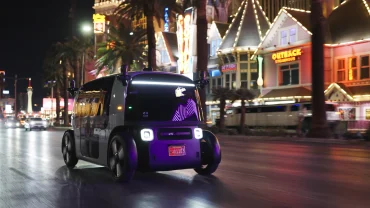
- Mobility Tech
JLR Cuts UK Jobs Amid EV Shift and Trump Tariff Impact
6 minute read

Luxury automaker layoffs highlight industry-wide strain as US tariffs and EV transition force operational restructuring across UK facilities
Key Takeaways
- 500 UK management jobs cut as Jaguar Land Rover implements voluntary redundancy affecting 1.5% of its 30,000-strong UK workforce following significant sales decline
- 15.1% sales drop in Q2 attributed to Trump tariffs and temporary US export halt, with wholesale volumes falling to 94,000 units amid trade disruptions
- Strategic pivot to electric vehicles drives restructuring as JLR phases out legacy Jaguar models and prepares for “new Jaguar” launch in 2026
Introduction
Jaguar Land Rover faces mounting pressure from trade tariffs and strategic transformation costs as the luxury carmaker announces plans to cut up to 500 management positions across its UK operations. The Tata Motors-owned company attributes the workforce reduction to a sharp decline in sales following tariff-related disruptions to its crucial US market.
The voluntary redundancy program affects approximately 1.5% of JLR’s UK workforce of over 30,000 employees. This move comes as the company grapples with a 15.1% sales decline in the quarter ending June, driven by a temporary halt in US exports and broader trade policy uncertainty.
Key Developments
JLR suspended shipments to the US in April after the Trump administration imposed a 25% duty on foreign-made vehicles. The company resumed exports in May but continued to face elevated tariff rates that significantly impacted profitability on its largest international market.
The US market represents more than a quarter of JLR’s total sales, making tariff disruptions particularly damaging to the company’s financial performance. Wholesale volumes dropped to 87,286 units in the second quarter, marking a 21.7% decrease compared to the previous period.
A recent trade agreement between the US and UK provides some relief, allowing JLR to export 100,000 cars annually at a reduced 10% tariff rate. However, this represents a significant increase from the pre-tariff rate of 2.5%, with vehicles exceeding the 100,000 threshold facing the standard 27.5% duty.

Market Impact
JLR’s quarterly results reveal the extent of tariff-related damage across key markets. North American wholesale sales declined 12.2%, while UK sales dropped 25.5% during the second quarter. The company’s profit margin forecasts were revised downward to between 5% and 7% for the year, compared to a previous 10% estimate.
The preceding year ending March 31 saw an 8.5% profit margin, highlighting the rapid deterioration in financial performance. Wholesale volumes fell 10.7% year-over-year, with the company describing results as “in line with expectations” amid challenging market conditions.
Trade tensions have forced JLR to reassess its operational strategy, with management roles bearing the brunt of cost-cutting measures. The voluntary nature of redundancies suggests the company is attempting to manage workforce reductions while maintaining operational capabilities.
Strategic Insights
The job cuts reflect broader challenges facing legacy automakers as they navigate trade barriers while investing heavily in electrification. JLR’s decision to phase out traditional Jaguar models including the XE, XF, and F-TYPE demonstrates the company’s commitment to electric vehicle transformation despite short-term revenue pressures.
Production cessation of key models at Castle Bromwich and Austrian facilities has created a strategic gap in JLR’s lineup until the “new Jaguar” launch in 2026. This transition period leaves the company vulnerable to external shocks while limiting revenue generation from traditional product lines.
The management-level focus of redundancies suggests JLR is streamlining operations for a more electric-focused future. The Guardian reports that despite workforce reductions, the company continues expanding electric vehicle operations and hiring for future EV production lines.
Expert Opinions and Data
Professor David Bailey of Birmingham Business School emphasized the significant role tariffs play in JLR’s difficulties, noting the dramatic increase from 2.5% to potentially 27.5% for certain models. This tariff escalation fundamentally altered the economics of JLR’s US operations.
UK ambassador to the US Peter Mandelson highlighted the trade agreement’s importance in preventing immediate job losses at JLR’s West Midlands facility. “This deal has saved those jobs … That’s a pretty big achievement in my view, and I’m very pleased that the president has signed it,” Mandelson told CNN.
CEO Adrian Mardell affirmed the deal’s role in sustaining 250,000 jobs across the UK automotive industry. Labour MP Preet Kaur Gill praised the tariff reduction for helping preserve 12,000 jobs while expressing confidence in maintaining strong trade relationships.
Conclusion
JLR’s workforce reduction represents both an immediate response to tariff-driven financial pressures and a strategic repositioning for electric vehicle production. The company’s ability to weather current challenges while executing its transformation strategy will determine its competitiveness in the evolving automotive landscape.
The voluntary redundancy program signals management’s attempt to balance cost control with operational continuity as JLR navigates the complex transition from legacy luxury vehicles to electric mobility solutions. The company’s experience illustrates the mounting pressures facing traditional automakers in an era of trade uncertainty and accelerating electrification demands.








